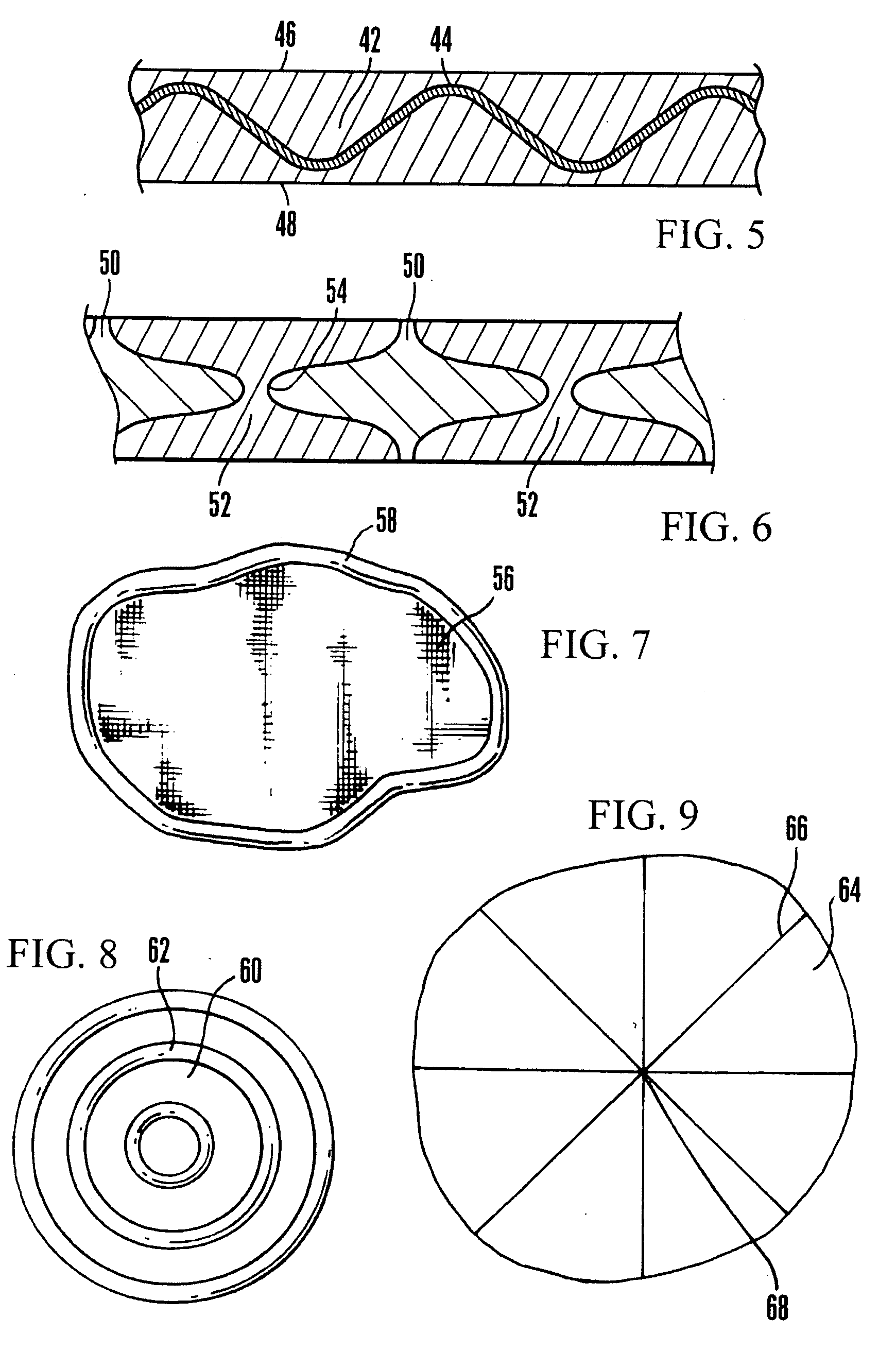Fortified mesh for tissue repair
a mesh and tissue technology, applied in the field of repair of hernias, can solve the problems of decreased mesh resiliency, difficult identification and/or remedy, increased mesh mass, etc., and achieve the effect of increasing increasing the diameter of the filament, and decreasing the resiliency of the mesh
- Summary
- Abstract
- Description
- Claims
- Application Information
AI Technical Summary
Benefits of technology
Problems solved by technology
Method used
Image
Examples
Embodiment Construction
[0029]FIG. 1A shows a device 200 that includes a round deformable thread mesh 202 designed to lay against a muscle wall and a ribbon or thread plug 204 engaged with the mesh 202 and designed to fill a hole in the muscle wall. The plug 204 is formed of a ribbon of mesh strands in a flower petal configuration as shown. The plug 204 alternatively may be a plug disclosed in the present assignee's U.S. patent application Ser. No. 11 / 934,897, incorporated herein by reference.
[0030]The plug 204 and / or mesh 202 may be provided with strengthening members in accordance with disclosure below. Briefly, in the example shown strengthening members 202a are provided around the periphery of the mesh 202 while strengthening members 204a are provided around the peripheries of the tops and bottoms of each “petal” of the plug 204.
[0031]In the example shown, the strengthening members 202a, 204a are established by thread fibers that are more closely knitted together than the fibers of the mesh 202 / plug 20...
PUM
 Login to View More
Login to View More Abstract
Description
Claims
Application Information
 Login to View More
Login to View More - R&D
- Intellectual Property
- Life Sciences
- Materials
- Tech Scout
- Unparalleled Data Quality
- Higher Quality Content
- 60% Fewer Hallucinations
Browse by: Latest US Patents, China's latest patents, Technical Efficacy Thesaurus, Application Domain, Technology Topic, Popular Technical Reports.
© 2025 PatSnap. All rights reserved.Legal|Privacy policy|Modern Slavery Act Transparency Statement|Sitemap|About US| Contact US: help@patsnap.com



